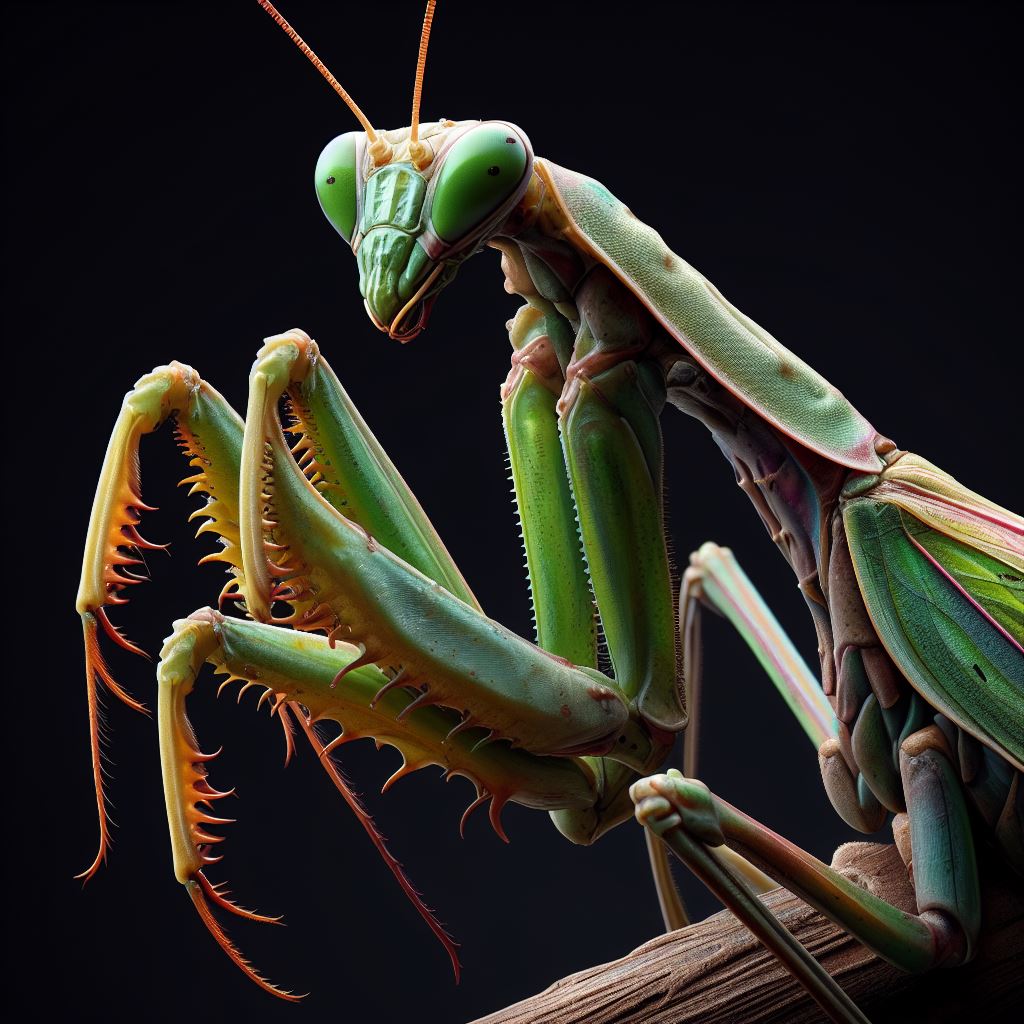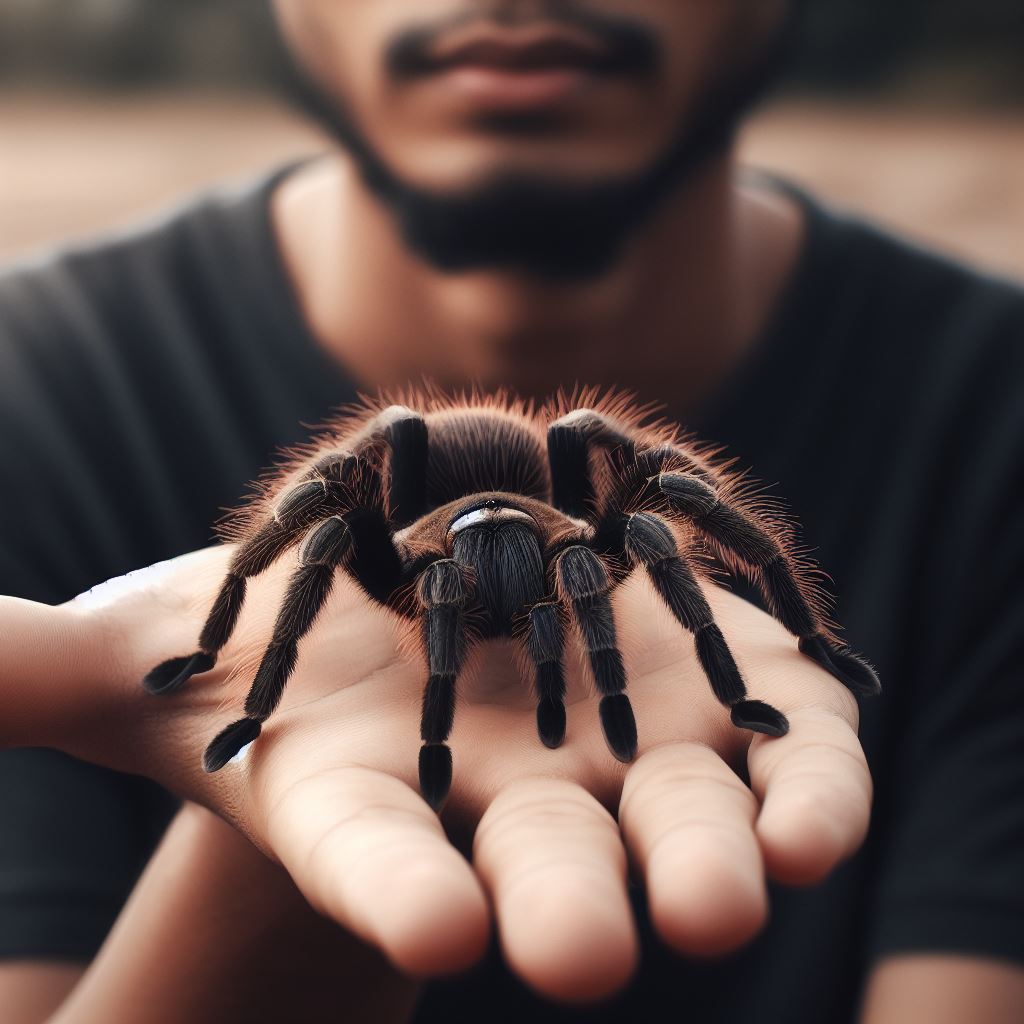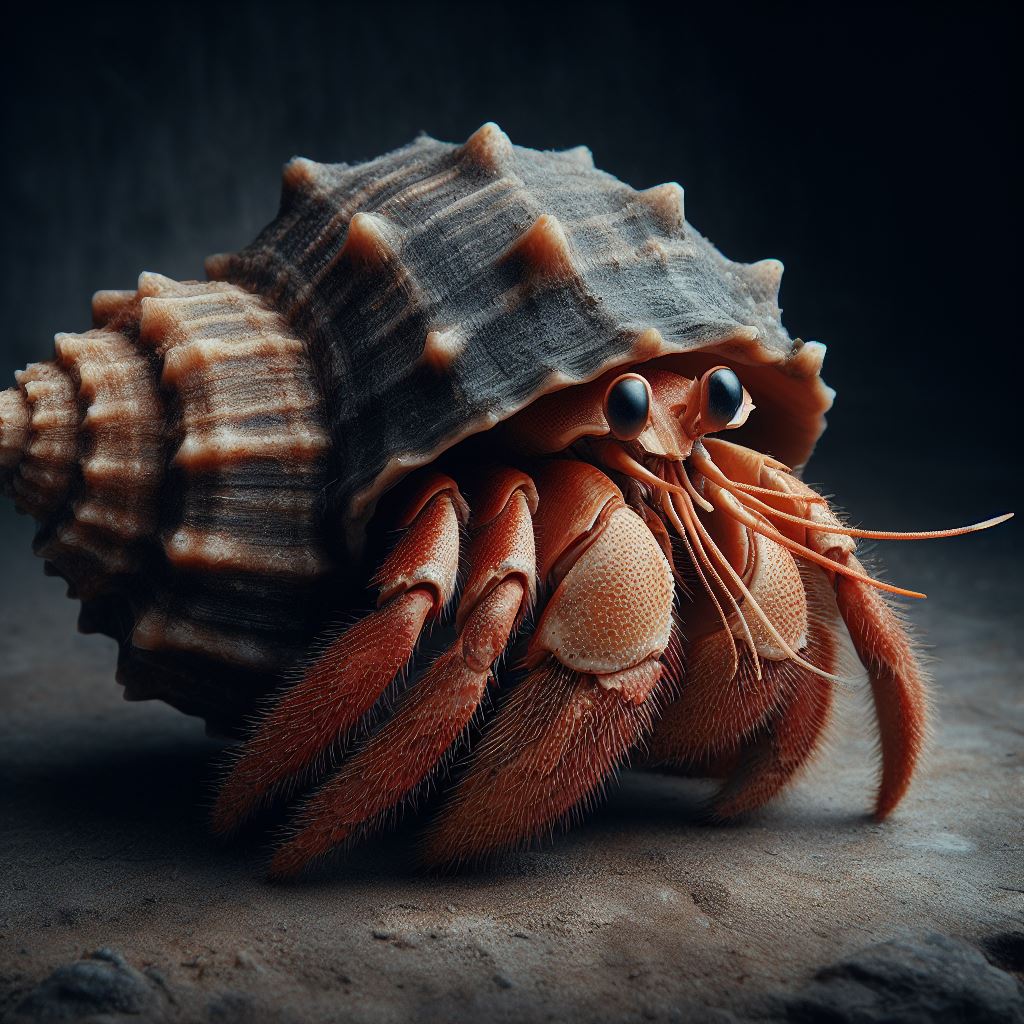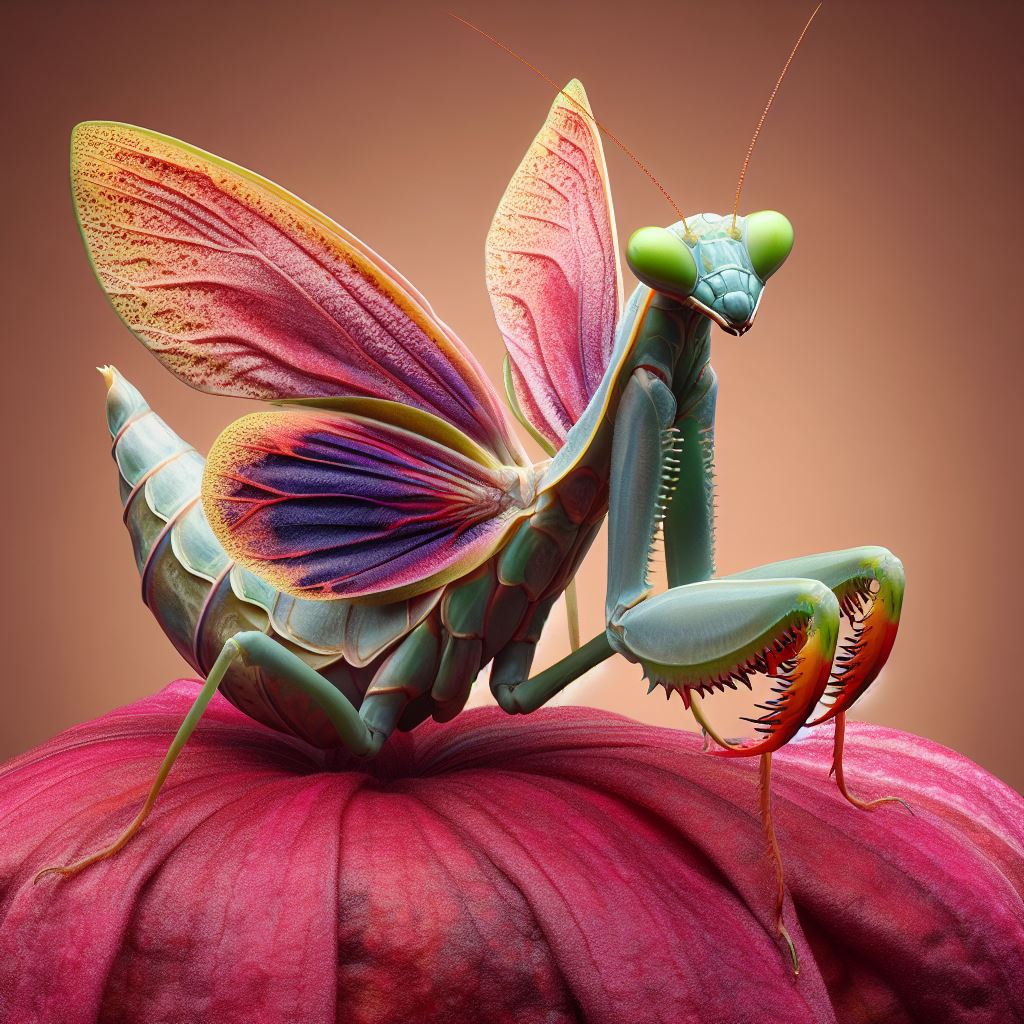In the intricate tapestry of the insect world, the praying mantis stands as a fascinating and enigmatic creature. With its poised stance and captivating hunting techniques, this remarkable insect has captured the curiosity of enthusiasts and nature lovers alike. In this comprehensive pet profile, we delve deep into the world of the praying mantis, exploring its taxonomy, unique features, natural habitat, dietary preferences, and the art of responsible care. Let’s unravel the mysteries of this incredible insect companion.
Species Name: Praying Mantis
Taxonomy and Classification
The praying mantis, scientifically known as Mantodea, belongs to a diverse order of insects. Within this order, numerous species display a stunning array of sizes, colors, and behaviors, making them a fascinating subject of study for entomologists and nature enthusiasts alike.
Physical Characteristics
Praying mantises are characterized by their elongated bodies, slender legs, and distinct triangular heads. Their bodies often exhibit a range of colors, from earthy browns and greens to vibrant shades, allowing them to blend seamlessly into their natural surroundings.
Description of Praying Mantis
Size and Shape
Praying mantises come in various sizes, ranging from a few centimeters to several inches in length. Their slender bodies and elongated prothorax give them an appearance of graceful fragility, belying their remarkable agility and predatory skills.
Mimicry and Camouflage
One of the most intriguing features of praying mantises is their ability to mimic their surroundings. Some species resemble leaves or flowers, a form of camouflage that aids them in both hunting and evading predators.
Distinctive Features
Praying mantises are renowned for their specialized forelegs, which are adapted for gripping and capturing prey with astonishing precision. Additionally, their large compound eyes provide excellent vision, allowing them to track movement and detect potential threats.
Habitat of Praying Mantis
Global Distribution
Praying mantises can be found in a variety of habitats worldwide, from tropical rainforests and deserts to temperate woodlands. Their adaptability to diverse environments has contributed to their widespread distribution across continents.
Preferred Environmental Conditions
While specific preferences vary by species, most praying mantises thrive in warm, sunny climates. They are often found in areas with abundant vegetation, providing them with ample hunting grounds and hiding spots.
Diet of Praying Mantis
Carnivorous Nature
Praying mantises are carnivorous insects with voracious appetites. Their diet primarily consists of small insects and invertebrates, making them valuable allies in controlling pest populations in gardens and agricultural fields.
Hunting Techniques
Praying mantises are skilled hunters, utilizing a combination of stealth and patience. They remain motionless, blending into their surroundings, and then strike with lightning speed when prey comes within reach. Their powerful forelegs are capable of grasping and immobilizing a variety of insects.
Preferred Prey Items
In the wild, praying mantises feed on a wide range of insects, including flies, moths, crickets, and grasshoppers. Their adaptability allows them to adjust their diet based on the availability of prey in their immediate environment.
Feeding Habits of Praying Mantis
Feeding Frequency
To feed Praying mantises are opportunistic feeders, consuming prey whenever it is available. While their feeding frequency varies based on factors such as temperature and prey availability, they are known for their ability to consume a significant portion of their body weight in a single meal.
Molting and Eating Patterns
Like other arthropods, praying mantises molt periodically to accommodate their growth. During this vulnerable phase, they refrain from eating and focus on shedding their exoskeleton. Post-molting, they often consume the shed exoskeleton to regain vital nutrients.
Fasting and Seasonal Changes
In captivity, praying mantises may experience periods of fasting, especially during molting or reproductive phases. Seasonal changes, such as temperature fluctuations, can also influence their feeding behavior, leading to variations in appetite.
Care Tips for Praying Mantis Owners
Suitable Housing Requirements
Creating a suitable habitat is essential for the well-being of pet praying mantises. Enclosures should be spacious enough to allow for movement and include elements like twigs, leaves, and branches to mimic their natural environment.
Temperature and Humidity Control
Maintaining appropriate temperature and humidity levels is crucial for the health of captive praying mantises. Heat lamps or heat pads can be used to create a warm environment while misting the enclosure helps maintain adequate humidity.
Social Needs and Solitary Nature
Praying mantises are solitary insects and prefer to live alone. Keeping them individually in their enclosures prevents stress and potential aggression between individuals. Solitude allows them to exhibit their natural behaviors comfortably.
Exercise and Environmental Enrichment
Providing an enriched environment encourages natural behaviors in pet mantises. Live plants, branches, and climbing structures offer opportunities for exercise and mental stimulation. Regular exploration keeps them active and engaged.
Grooming Routines and Molting Support
During molting, praying mantises are vulnerable and require a stress-free environment. Providing a secure and quiet space is essential during this period. Additionally, removing uneaten prey items helps prevent stress and potential injuries.
Medical Care and Common Health Issues
Regular observation is crucial for detecting potential health issues early. Signs of distress, changes in behavior, or abnormalities in appearance warrant attention. Consulting an experienced veterinarian is essential for accurate diagnosis and treatment.
Necessary Equipment and Supplies
Enclosures and Terrarium Accessories
Enclosures for pet praying mantises should offer both space and security. Mesh cages or glass terrariums with secure lids are suitable options. Natural elements like rocks, branches, and live plants create a stimulating and enriching environment.
Heating and Lighting Devices
Maintaining a stable temperature is vital for the well-being of praying mantises. Heating devices such as heat pads or heat lamps provide warmth, promoting their activity and digestion. While praying mantises do not require specific lighting, a regular day-night cycle can be established with low-wattage bulbs.
Humidity Control Tools
Praying mantises require a humid environment, especially during molting. Misting systems or hand sprayers help maintain optimal humidity levels within the enclosure. Monitoring devices like hygrometers assist in ensuring a consistent humidity range.
Feeding Tools and Prey Sources
ToFeeding pet mantises requires a variety of live insects, such as crickets, fruit flies, and small moths. Feeding tongs or small containers are helpful tools for controlled feeding interactions. Breeding feeder insects at home ensures a readily available and nutritious food source.
Handling and Safety Gear
When handling pet mantises, gentle methods such as using a soft brush or a catch cup prevent stress or injuries. For enthusiasts who prefer hands-on interaction, wearing soft gloves made of materials like latex or nitrile protects during handling sessions.
Social Aspects of Praying Mantis Keeping
Community and Online Forums
Engaging with fellow mantis enthusiasts through online forums and social media platforms provides a valuable support network. These communities offer a platform for sharing experiences, seeking advice, and learning about the latest developments in mantis care.
Sharing Knowledge and Experiences
The exchange of knowledge and experiences within the mantis-keeping community contributes to the collective understanding of these insects. Sharing insights about successful breeding, feeding techniques, and behavioral observations enhances the overall expertise of enthusiasts.
Conservation Efforts and Responsible Ownership
Praying mantises play a vital role in ecosystems by controlling insect populations. Supporting conservation efforts aimed at protecting their natural habitats ensures the preservation of mantis species. Additionally, responsible pet ownership, including proper care and ethical breeding practices, contributes to the overall well-being of mantises in captivity.
Common Misconceptions about Praying Mantis
Myths vs. Facts
Several myths surround praying mantises, often portraying them as aggressive or dangerous. In reality, mantises are generally harmless to humans and are valuable allies in pest control. Educating the public about their true nature dispels these misconceptions.
Misunderstandings about Aggression
While mantises are skilled hunters, they pose no threat to humans when handled responsibly. Their occasional predatory behavior should be viewed as an instinct rather than aggression. Understanding their behavior promotes safe interactions between mantises and enthusiasts.
Importance of Education in Keeping Praying Mantis
Education forms the cornerstone of responsible mantis ownership. Understanding their biology, behavior, and specific care requirements is essential for providing a suitable environment. Continuous learning ensures the well-being of both the mantis and its keeper.
Praying Mantis in Culture and History
Symbolism and Cultural Significance
Praying mantises have intrigued cultures worldwide, symbolizing different traits such as patience, calmness, and mindfulness. In various cultures, they are seen as symbols of balance and serenity, reflecting their poised and deliberate movements.
Praying Mantis in Art and Literature
Throughout history, mantises have appeared in art, literature, and folklore. Their unique appearance and intriguing behaviors have inspired artists and writers, leading to a diverse range of interpretations and depictions in various forms of creative expression.
Historical Relevance in Different Cultures
Praying mantises have held historical significance in diverse cultures, often associated with myths, legends, and spiritual beliefs. In some societies, they are revered as spiritual guides, while in others, they are seen as omens or symbols of protection.
Famous Praying Mantis Species
Notable Species in the Praying Mantis Family
Certain mantis species have gained recognition for their striking appearance or unusual behaviors. These species serve as ambassadors for their kind, captivating enthusiasts and researchers alike. Studying these species provides valuable insights into the world of mantises.
Remarkable Behavioral Traits
Praying mantises exhibit a wide range of behaviors, from complex courtship rituals to intricate hunting techniques. Studying these behaviors not only deepens our understanding of mantises but also provides valuable information for scientific research and ecological studies.
Contributions to Scientific Research
Mantises have been subjects of scientific study, contributing valuable information to fields such as biology, behavior, and ecology. Their predatory behaviors and unique adaptations have inspired innovations in robotics and engineering, leading to the development of bio-inspired technologies.
Fun Facts about Praying Mantis
Intriguing Behavioral Patterns
Praying mantises exhibit fascinating behavioral patterns, including swaying movements, grooming rituals, and elaborate courtship dances. These behaviors are not only captivating to observe but also provide valuable insights into their communication and social interactions.
Reproduction and Mating Rituals
Mantis mating rituals are among the most captivating in the insect world. Courtship behaviors, such as the male offering a gift of prey to the female, showcase the intricate dance of attraction and survival. Understanding these rituals enhances our appreciation for their complexity.
Surprising Adaptations and Survival Tactics
Praying mantises possess remarkable adaptations, including their ability to rotate their heads 180 degrees and their keen sense of vision. Additionally, their forelegs are equipped with specialized spines for gripping and holding prey securely. These adaptations highlight their evolutionary prowess.
Conclusion: The Enchanting World of Praying Mantises
In the realm of exotic pets, the praying mantis stands as a testament to the beauty and complexity of the natural world. By delving into their taxonomy, behavior, and care requirements, enthusiasts gain a deeper appreciation for these incredible insects. Responsible mantis ownership, coupled with education and conservation efforts, ensures that the enigmatic world of praying mantises continues to captivate and inspire generations to come. As we marvel at their grace and ingenuity, we are reminded of the delicate balance that sustains life on Earth, where even the smallest creatures play a significant role in the intricate tapestry of existence.




